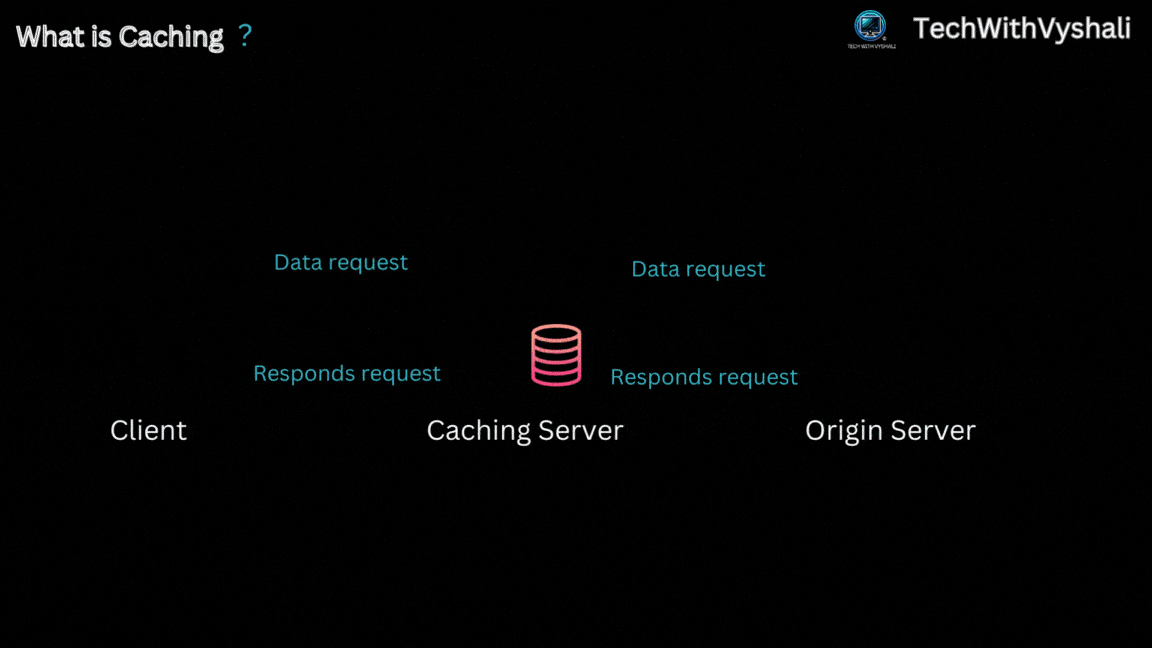Understanding Caching: Boosting Performance and Efficiency
Outline on Caching:
- What is Caching
- Types of Caching
- Benefits of Caching
- Challenges and Considerations
- Conclusion
1.What is Caching?
Caching is the process of storing copies of data or files in a cache, which is a temporary storage location, so they can be accessed more quickly in the future. The primary purpose of caching is to reduce the time it takes to retrieve data, decrease the load on the main data source, and improve the overall performance of a system.

Think of caching as a memory shortcut. When a system or application requests data, it first checks the cache to see if the data is already there. If it is, the system retrieves it from the cache, which is much faster than fetching it from the original source. If the data isn’t in the cache, the system will retrieve it from the primary storage, store a copy in the cache for future use, and then deliver the data to the user.
2.Types of Caching
Caching can be implemented at various levels within a system, each serving different purposes:
- Browser Caching: When you visit a website, your browser stores certain elements like images, stylesheets, and JavaScript files in its cache. The next time you visit the site, the browser can load these elements from the cache instead of downloading them again, speeding up the page load time.
- Server Caching: On the server side, caching can involve storing database query results, HTML pages, or other data that would otherwise take longer to generate. This reduces the server load and speeds up the delivery of content to users.
- Database Caching: In database systems, caching can be used to store the results of complex queries or frequently accessed records. This reduces the need to repeatedly run the same queries, thus saving time and computational resources.
- Application Caching: Applications can cache data in memory to avoid repeated calculations or data fetching. For example, a weather app might cache the latest weather data so that it doesn’t have to request new data every time the user opens the app.
- Content Delivery Network (CDN) Caching: CDNs cache copies of content on servers located closer to the user. When someone requests a file, the CDN delivers it from the nearest cache, reducing latency and improving load times.
3.Benefits of Caching
Caching offers several key benefits that contribute to the performance and efficiency of systems:
- Improved Speed and Responsiveness: By storing frequently accessed data closer to where it’s needed, caching significantly reduces the time it takes to retrieve that data. This results in faster load times for websites, quicker response times for applications, and an overall smoother user experience.
- Reduced Server Load: Caching reduces the number of requests sent to the server or database, which decreases the load on these resources. This can lead to better scalability and lower costs, as the system can handle more users without needing additional infrastructure.
- Enhanced User Experience: Faster load times and responsive applications lead to a better user experience, which can improve user satisfaction, retention, and engagement.
- Efficiency in Resource Utilization: Caching optimizes the use of computational and network resources by minimizing redundant data retrieval and processing. This efficiency can be particularly valuable in environments with limited bandwidth or high traffic volumes.
4.Challenges and Considerations
While caching offers numerous advantages, it also comes with some challenges and considerations:
- Cache Invalidation: One of the biggest challenges with caching is ensuring that the cache remains up-to-date. If cached data becomes outdated or stale, users might receive incorrect or outdated information. Managing cache invalidation—determining when to update or remove cached data—is crucial for maintaining accuracy.
- Cache Size and Memory Usage: Caches have limited storage capacity, so it’s important to manage what gets cached and for how long. Storing too much data in the cache can lead to memory issues, while caching too little can negate the performance benefits.
- Cache Misses: A cache miss occurs when the requested data is not found in the cache, forcing the system to retrieve it from the original source. While caching aims to minimize cache misses, they can still occur and temporarily affect performance.
- Security Considerations: Caching sensitive data requires careful consideration to ensure that the cached information is protected from unauthorized access. Encryption and secure storage practices are essential when dealing with sensitive data in caches.
5.Conclusion
Caching is an essential technique for improving the speed, efficiency, and scalability of systems in today’s digital landscape. By understanding how caching works and implementing it effectively, developers and system administrators can ensure that their applications and services deliver the best possible performance to users. Whether it’s reducing load times for a website, speeding up database queries, or optimizing resource utilization, caching plays a critical role in creating fast, responsive, and efficient systems.